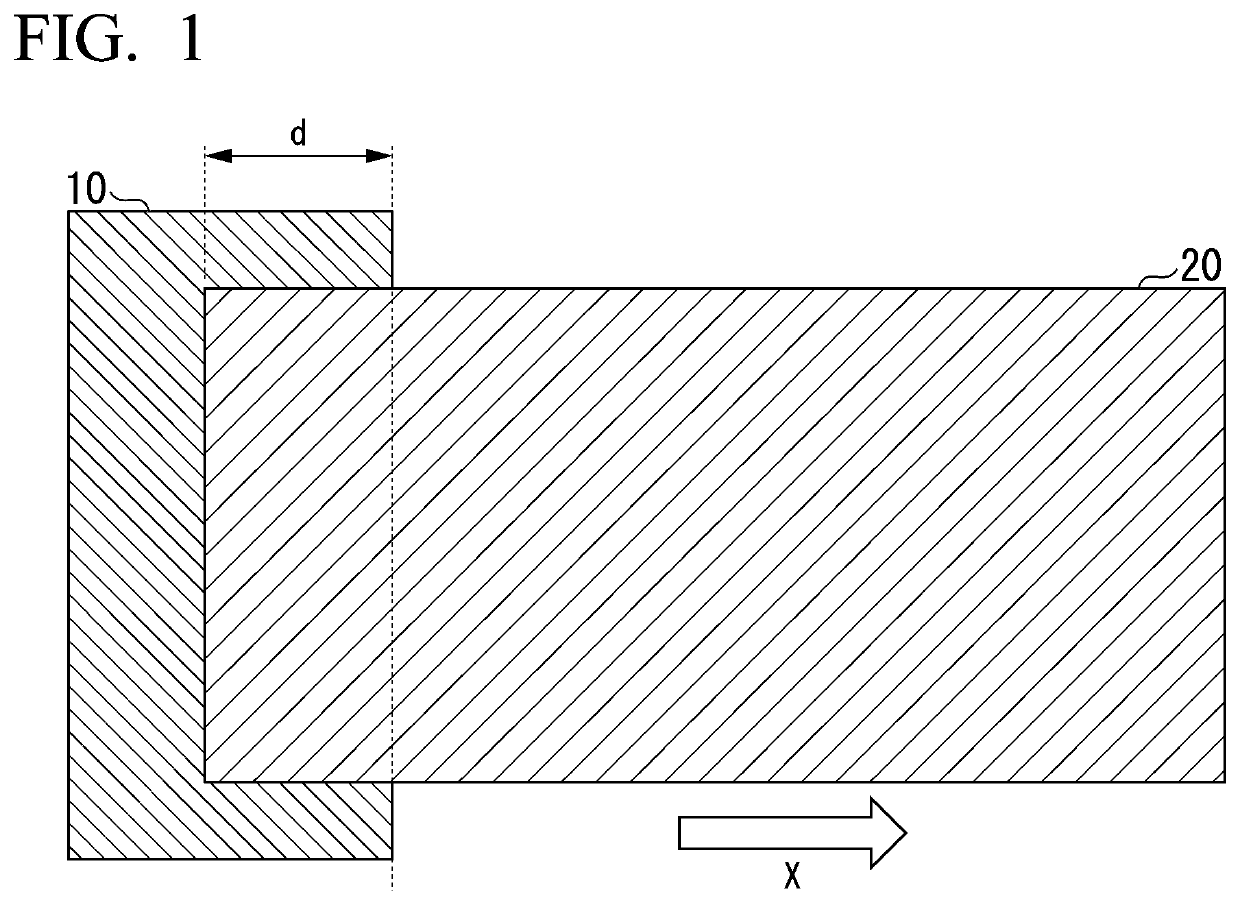Epoxy resin composition for carbon-fiber-reinforced composite materials, prepreg, and carbon-fiber-reinforced composite material
- Summary
- Abstract
- Description
- Claims
- Application Information
AI Technical Summary
Benefits of technology
Problems solved by technology
Method used
Image
Examples
example 1
[0337](Preparation of Epoxy Resin Composition)
[0338]In a planetary mixer, 55 parts by mass of jER807, 35 parts by mass of jER604, 5 parts by mass of MY0510, 5 parts by mass of jER828, and 10 parts by mass of SUMIKAEXCEL 5003P were weighed. The jacket temperature of the planetary mixer was set to 140° C. to 160° C., and the contents were mixed until the contents became homogeneous. The contents were cooled to 60° C. or lower, and 54 parts by mass of Aradure 9719-1 was added to the planetary mixer. The jacket temperature was set to 55° C. to 70° C., and the contents were mixed until the contents became homogenous, thereby obtaining an epoxy resin composition.
[0339](Physical Properties and Evaluation)
[0340]The hardened product of the epoxy resin composition was evaluated according to the above-described methods. The results are shown in Table 1.
example 2
[0341](Preparation of Epoxy Resin Composition)
[0342]In a planetary mixer, 55 parts by mass of jER807, 35 parts by mass of jER604, 5 parts by mass of MY0510, 5 parts by mass of jER828, and 10 parts by mass of SUMIKAEXCEL 5003P were weighed. The jacket temperature of the planetary mixer was set to 140° C. to 160° C., and the contents were mixed until the contents became homogeneous. The contents were cooled to 60° C. or lower, and 49.5 parts by mass of Aradure 9719-1 was added to the planetary mixer. The jacket temperature was set to 55° C. to 70° C., and the contents were mixed until the contents became homogenous, thereby obtaining an epoxy resin composition.
[0343](Physical Properties and Evaluation)
[0344]The hardened product of the epoxy resin composition was evaluated according to the above-described methods. The results are shown in Table 1.
example 3
[0345](Preparation of Epoxy Resin Composition)
[0346]In a planetary mixer, 55 parts by mass of jER807, 35 parts by mass of jER604, 5 parts by mass of MY0510, 5 parts by mass of jER828, and 10 parts by mass of SUMIKAEXCEL 5003P were weighed. The jacket temperature of the planetary mixer was set to 140° C. to 160° C., and the contents were mixed until the contents became homogeneous. The contents were cooled to 60° C. or lower, and 45 parts by mass of Aradure 9719-1 was added to the planetary mixer. The jacket temperature was set to 55° C. to 70° C., and the contents were mixed until the contents became homogenous, thereby obtaining an epoxy resin composition.
[0347](Physical Properties and Evaluation)
[0348]The hardened product of the epoxy resin composition was evaluated according to the above-described methods. The results are shown in Table 1.
PUM
| Property | Measurement | Unit |
|---|---|---|
| Temperature | aaaaa | aaaaa |
| Percent by mass | aaaaa | aaaaa |
| Percent by mass | aaaaa | aaaaa |
Abstract
Description
Claims
Application Information
 Login to View More
Login to View More - R&D Engineer
- R&D Manager
- IP Professional
- Industry Leading Data Capabilities
- Powerful AI technology
- Patent DNA Extraction
Browse by: Latest US Patents, China's latest patents, Technical Efficacy Thesaurus, Application Domain, Technology Topic, Popular Technical Reports.
© 2024 PatSnap. All rights reserved.Legal|Privacy policy|Modern Slavery Act Transparency Statement|Sitemap|About US| Contact US: help@patsnap.com








